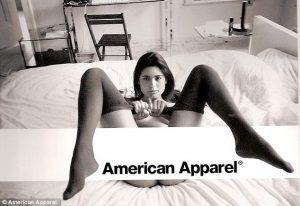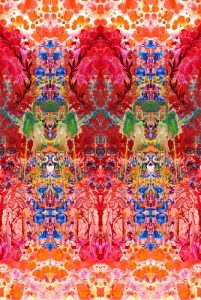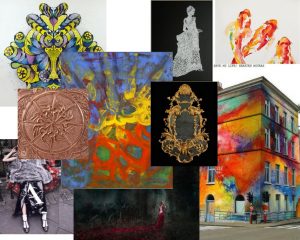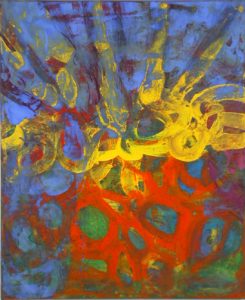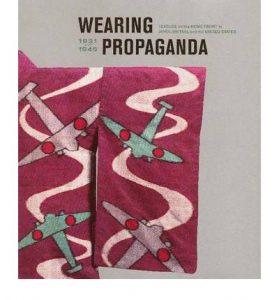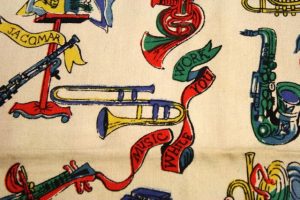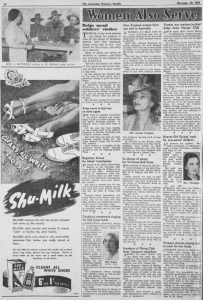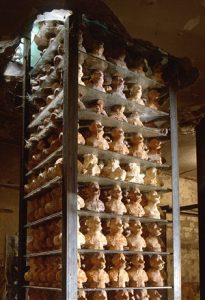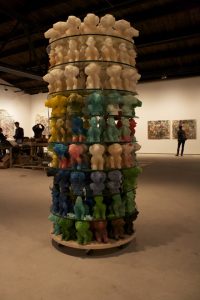Reflective Writing
Overall, I have found the research and communications module surprisingly useful. I have gathered many techniques for finding better sources of information, which I previously did not know. Looking forward I will be using these techniques in my research for my projects, to make them more well-rounded.
Firstly, for task 1 and 2 I decided to look at the works of Dieter Ross, from a book I found in library. The task was to scan an image from a book, and then find a photograph of an object, garment or textile from a website that relates to it. Furthermore, identify a museum or archive that provides information to broaden my understanding of the image and object. Considering I had never had to find online archives in museums, I found it rather easy to locate the one specified for my image of the book I choose. On this front, I believe I was lucky as the description of the image said that it was displayed at the Schimmel Museum. I think this was useful as on the museum website, although a bit sparse of the information I wanted, provided extra information which I did not know. I believe this would be useful to look out for and use in upcoming projects.
Task 3 and 4, the introduced me to Harvard referencing. Before this task, I never realised the true importance of correctly referencing work, and how if not doing so is plagiarizing others work. This is not just importance for the artists which work we draw inspiration from; but also for myself as an artist, and be to protect my work and my rights. At first, I found the referencing very slow, especially when looking on websites and for newspaper articles. On many websites, you had to really dig for the information you wanted, and it was interesting to see how on some, few websites credited the actual author, and were defaulted to the websites overall publisher. Going forward I will use the Harvard referencing system on my referencing, but due to how time consuming it can be; will now be more selective with my sources, to not over extend myself with referencing too many things.
Moving on to task 5 and 6, we were tasked to create a mood board of the visual references, which we had selected to relate to what we thought a selected designer would have been inspired by. Then, we were asked to select one of these images, and write an analysis on it. I found this rather refreshing, because it made me as a designer, really think and research about the inspiration behind my inspiration. For this task, I looked at Timorous Beasties, a relatively well-known print company. Visually when I looked at his work I could see some of his inspiration but it wasn’t until I went and looked on their website a visited their description, that I found what was truly behind Timorous Beasties. I liked the process of searching keywords from their over view to find more in-depth inspiration. It really opened my eyes to how many useful and inspirational sources their work was made up of. And through this I found the abstract painter Bill Jenson, whose work I found very interesting to analysis. Going further, I think I will use this method to steer away from using as many ‘big name’ designers, and go along this path of seeing where their inspiration came from to inspire me further; and broaden my research.
Task 7 and 8, I found very challenging. The task was to respond and reflect on a given text, in this case I those ‘Taste, Fashion and The French Fashion magazine’. I had never personally come across a text so difficult to read, and it was a real challenge to continuously look up complicated words and phrases. However, all the same, rather interesting and rewarding to discover the deeper meaning of the text. Usually, when gathering inspiration, I would steer clear for this kind of text, just because of how confusing it can be. However, going forward I think I might give it a second chance, as the quotes you can obtain and almost invaluable and I feel could add much depth to work.
Finally, for task 9 and 10, this was one of my favourites out of the tasks. For this task, we were given two controversial images and had to choose one to explain the ethical issues displayed. For this I chose the American Apparel image. I find ethical issues such as these displayed in American Apparels advert very interesting. I liked visually picking apart the image and describing what I saw and what it suggested. It reminded me, as a designer to be more judgemental and voice my opinion on such matters. Maybe even use such ethical issues to create a more interesting project; and to go forward with my analytic debating skills more forwardly and freely.
I feel everything I have learned this module, has been justified useful to take forward in my upcoming projects. And to use these skills to make these projects more well-rounded and interesting, as it has shown me that research is just as important as the work later produced.

